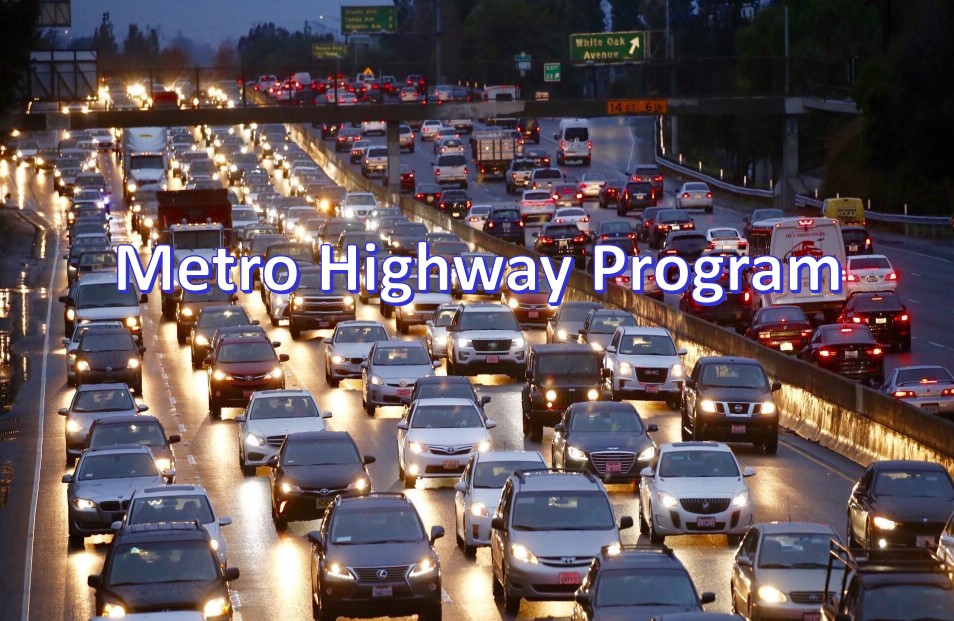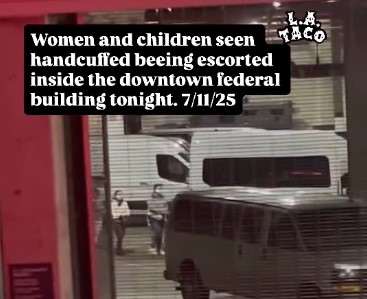Metro's new CEO Stephanie Wiggins is taking worthwhile steps toward reforming the agency's Highway Program. In order to encourage multimodal projects, Wiggins recently moved highway projects under the agency's department of Countywide Planning & Development.
Wiggins' push to realign freeway project priorities is very much in alignment with changes underway at the state and even federal levels. California's transportation department Caltrans has been gradually shifting its programs to embrace a complete streets approach, and the California State Transportation Agency (CalSTA) developed an overarching framework (the California State Climate Action Plan for Transportation Infrastructure - CAPTI) to align transportation spending with climate policy. Under the leadership of forward-thinking agency heads, including Wiggins, Caltrans Director Toks Omishakin and CalSTA Secretary David Kim, highway projects are slowly shifting away from a long history of racist harm - into a more holistic future.
Slowly.
Perhaps too slowly.
In the past, the Metro Highway Program had been more or less its own semi-independent siloed shop. Highways did their own projects, plans, community outreach, seeking funding, etc. The phrase "community outreach" is used gingerly here; Metro freeway expansion projects have often had a minimum of actual outreach - for example, in 2020 Metro announced its plan to demolish hundreds of homes in Downey (to widen the 5 Freeway as part of the 605 Freeway Corridor Improvement Project), including just a single public input meeting. When later pressed by the Metro board to work with affected communities, Metro Highway Program staff committed to outreach that was “a little bit more robust than one meeting.”
As of late summer, Metro's freeway widening planners had been alluding to the a shift - mentioning that they were now part of Metro's planning department. A Metro staff report, released last week, made the reorganization public. The new report sheds some light on the change, including what Metro's intention is, and how the highway wideners are continuing to undermine that intent.
That staff report is scheduled to be discussed and received at tomorrow's 10:30 a.m. meeting of the Metro board's Planning and Programming Committee. The report responds to a motion from boardmember James Butts that followed up on Metro's recent modernization of the Highway Program. Approved in June, that new policy now makes it clearer that Metro can include multimodal components in highway projects. Note that many Metro highway projects are on surface streets shared by transit, pedestrians, cyclists, and drivers - and even Metro's freeway widening projects include components located on surface streets.
The staff report notes the reorganization led by Wiggins:
In line with the organizational realignment announced by the CEO, Metro’s Highway Program and the Grants Management Department ...now report to the Chief Planning Officer.
The report goes on to outline how future Metro highway projects are anticipated to be multimodal, though that commitment is undermined by lots of wiggle language, like "consider," "where possible," and the like. Also some of the potential multimodal improvements the report specifies (eg: curb ramps) are already standard practice. From the staff report: (emphasis added)
As Planner, Metro Highway Programs was directed to consider and include, to the extent possible, multimodal improvements during the development of Metro future Highway Projects.
As projects are being developed, accommodations for all users, whether they walk, bike, roll, take transit or drive are considered when warranted and their benefits are confirmed. These improvements include construction of missing sidewalks, curb ramps, bike lanes, bike refuge areas, pedestrian push buttons, and other project elements. Proposed highway improvement projects will also consider transit service-related work, including the preservation of right of way and allocation of roadway space. Local agencies within the area of effect of highway improvement projects are included on the project development teams. Their input and their relevant projects that can be merged with the proposed project are considered. Examples include inclusion of crosswalk renewals and/or additions, improved pedestrian access, advanced stop lines, leading pedestrian intervals, pedestrian push buttons and cycle detectors, turn lanes at an intersection, and similar projects. Highway staff will expand and improve these practices where possible.
Local complimentary projects such as pedestrian, bicycle, signal, and safety improvements will be included in the scope of highway projects. If the local agency has funds for those improvements, those funds will be merged into the project.
As we continue this work, highway investments will aim to provide mobility options for all, including those with the greatest mobility needs. Multimodal considerations are evaluated and applied to projects in the planning process when viable and warranted. Through multimodal consideration in the development of highway improvement projects, unique mobility needs and potential impacts to the surrounding community, including EFCs [Equity-Focus Communities] and marginalized or vulnerable users, can be identified and validated for consideration and either incorporated in the highway project being developed, or considered for implementation as standalone modal projects.
(The staff report further includes a longer attachment listing Highway Program's responses to specific concerns referenced in the Butts motion. That document is full of similarly non-committal wording - plus a few more zingers, eg: repetition of Metro's past denials that freeway expansion impacts climate: "GHG [greenhouse gas] production and reductions go beyond the assets Metro controls.")
Historically, the Metro Highway Program has stubbornly resisted including multimodal components in projects it manages. Even when the Metro board directed that money from the canceled 710 tunnels be redirected to surface street projects that "encourage multimodal trips," the Metro Highway Program ignored the board's explicit directions and, in an opaque process, insisted on funding predominantly car-centric projects instead.
More recently (including since Wiggins became CEO in early June this year), the head of Metro's Highway Program Abdollah Ansari has continued to criticize CEO Wiggins' stated priorities, which include equity, climate, and improving the transit rider experience. Ansari has been a vocal critic of transit, active transportation, and public input. He recently complained about Metro having to take equity into account for highway widening projects and criticized Caltrans Director Omishakin for pausing the lower 710 Freeway widening project after the EPA found the plans to be out of compliance with clean air law.
Though Wiggins' realignment is clearly a step in a positive direction, it's difficult to turn a battleship around. It remains to be seen if these changes will be fundamental or merely cosmetic - or, likely, somewhere in between.
The predominance of non-committal language in Metro's official staff report is worrying. It feels like a wink to pro-freeway-widening forces. It suggests that Metro may now give some lip service to consider mobility options for everyone, but Metro's highway projects will still just cater to drivers, at the expense of other modes, equity, health, and the environment.
Updated 11/17 to acknowledge CalSTA's role in developing CAPTI







